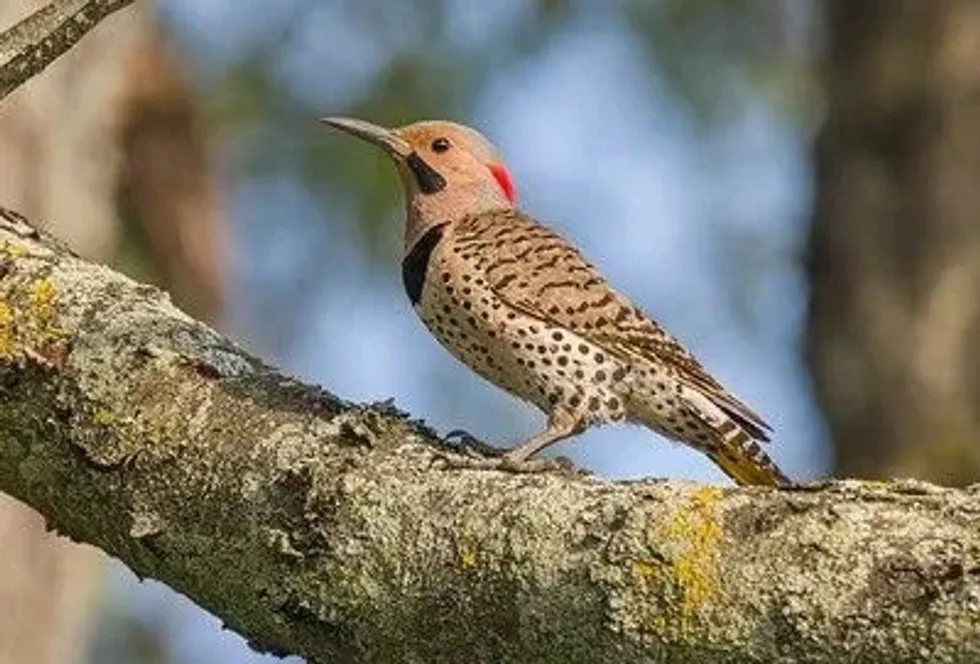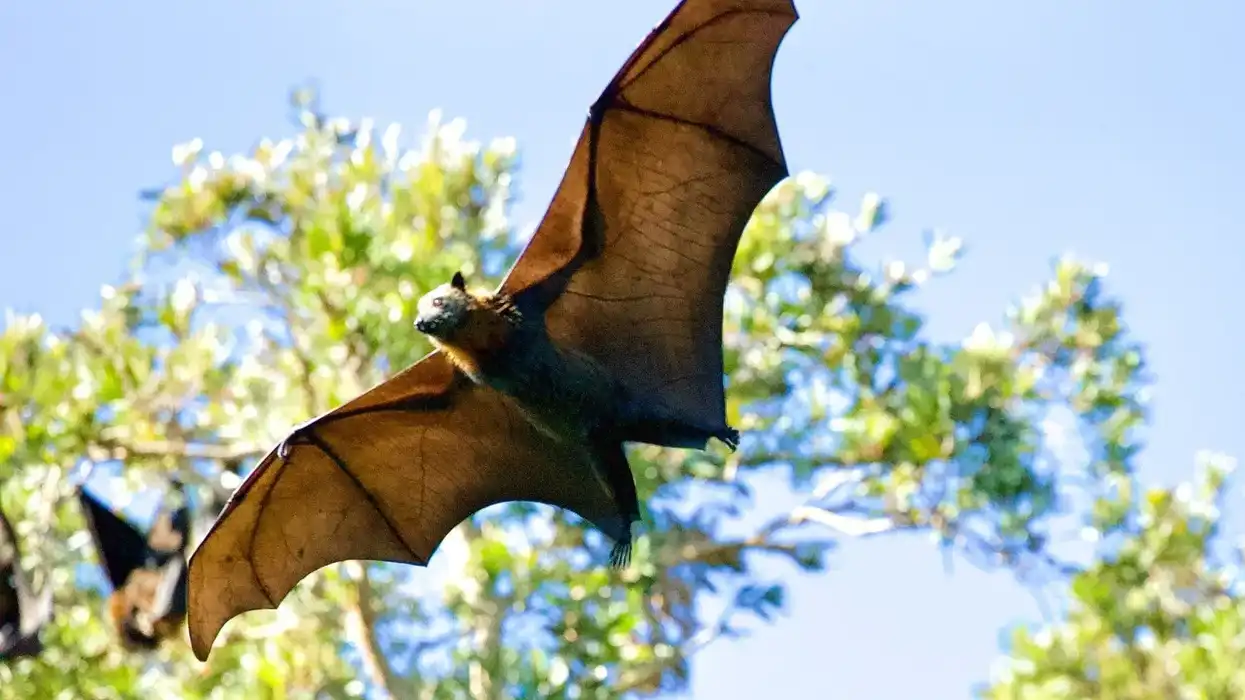Northern flickers (Colaptes auratus) are native to North America and Canada and are migratory birds belonging to the woodpecker family. They are the only species of woodpeckers with a brown colored feather coat. These birds are a common sight in suburban lawns, woods, and open grasslands.
They prefer higher elevations such as mountain ranges during the winter months to migrate. They need foraging space, so they do not like areas of dense trees. For nesting cavity, they prefer open areas with some trees for cover.
Although abundant in the Americas, their numbers have steadily come down with each year. Between 1966 and 2012, yellow shafted birds and the female and male red shafted northern flicker bird count in the wild has gone down by around 1.5% every year. Their current breeding population is estimated to range around nine million globally.
Included in this article is information regarding the male northern flicker, the female northern flicker, the northern flicker woodpecker, and more.
For more relatable content, check out these ivory billed woodpecker facts and hairy woodpecker facts for kids.
Northern Flicker Interesting Facts
What type of animal is a northern flicker?
They are birds with an undulating flight pattern. They flap their wings rapidly attaining elevation and then stop flapping. This causes them to drop to the ground and then they flap their wings rapidly again. From a distance, the flight pattern looks like a crest followed by a trough.
What class of animal does a northern flicker belong to?
They belong to the Aves class of animals. The majority of all birds fall under this class.
How many northern flickers are there in the world?
Although they are abundant in terms of numbers, their population has been coming down for some time now. Current estimate of the remaining northern flicker range is around 9,900,000.
Where does a northern flicker live?
This species of birds prefer a woody environment for foraging. Geographically, they can majorly be found in the United States and Canada.
What is a northern flicker's habitat?
A northern flicker (Colaptes auratus) is not very particular with its surroundings as long as there are some trees there. This is why the northern flicker habitat can be any place with some trees.
Who do northern flickers live with?
Pairs of northern flickers (Colaptes auratus) mate for life. However, during foraging they are not territorial. They can be seen foraging together with other birds, and they only become territorial when they are nesting.
How long does a northern flicker live?
The average lifespan of northern flickers range between five to seven years.
How do they reproduce?
Their mating rituals are pretty elaborate. When two rival males are vying for the same female, they will indulge in something called a 'fencing duel'.
With the female watching, two males will face each other on a branch. Their bills will be facing upwards and the two males will make a bobbing motion with their heads. The motion will resemble the figure eight.
Along with the bobbing, they will also make a rhythmic northern flicker call to attract the female. The female will ultimately decide the male that she is going to mate with.
What is their conservation status?
Colaptes auratus, which is the northern flicker scientific name, falls under the category of Least Concern.
Northern Flicker Fun Facts
What do northern flickers look like?
There are two types of flickers. They are the red shafted flicker and the yellow shafted flicker.
It is among the only brownish woodpeckers species. There is a large white patch on its back noticeable when it flies and it has a yellow under-surface of wings or flight feathers and tail feathers. Northern Flickers have a black crescent on the breast and red patch at the back of the head.
These are woodpeckers who are brown in color. They might even be the only type of woodpeckers who are brown in color. They stand out while flying. Northern flicker birds have on their back side a white patch. The tail feathers and wings or flight feathers have a yellow shade on their under-surfaces.

How cute are they?
Yellow shafted and red shafted northern flicker (Colaptes auratus) birds are extremely beautiful to look at and very attractive to boot. There is a clear distinction between a male red shafted and a female red shafted flicker.
Same distinction applies to male yellow shafted compared to female yellow shafted flickers. Males have a distinct red or black stripe at the base of their beaks.
How do they communicate?
Woodpeckers are loud birds. Like most woodpeckers, yellow shafted and red shafted variants are also loud birds.
Northern flicker sounds are like a loud laugh which last for a while. The northern flicker song and northern flicker sound are unique and are similar to a something like 'ki ki ki'. Calls are generally accompanied by drumming on trees and metallic objects using their beaks.
How big is a northern flicker?
Yellow shafted and red shafted variants range from 11-14 in (28-36 cm) in length and 17-21 in (42-54 cm) in wingspan. Their bill measures a little less than an inch in size. They are about half as big as a hairy woodpecker.
How much does a northern flicker weigh?
Weights range between 3-6 oz (86-167 g).
What are the male and female names of the species?
The male and the female species of yellow shafted and red shafted northern flicker birds don’t have specific gender based names.
What would you call a baby northern flicker?
A baby northern flicker is called a nestling. The female lays a clutch of eggs numbering between five to eight eggs in a nest.
Male and female northern flickers take turns in incubating the eggs for a period of 11 days in the nest. After hatching, the nestlings or juvenile northern flickers remain safely ensconced inside the northern flicker nest for almost four weeks. Juvenile northern flickers don’t have fully functional wings.
The process of developing wings on a nestling is called fledging. Even after the fledging is complete, the young ones will follow the parents around for a few more weeks.
What do they eat?
The yellow shafted and red shafted northern flicker diet consists mainly of ants. Apart from ants, they forage anything that is lying on the ground like seeds and also eat fruits. They also eat worms, butterflies, insects, snails, and moths found on the ground. In the winter months, they also eat berries, ivy, and dogwood sumac from the ground.
Are they friendly?
These birds will not interact directly with humans. If your garden has an abundance of insects and dead wood and ants, they will certainly pay your garden a visit.
Would they make a good pet?
Not much is known about keeping flickers as pets. This is mostly because they are migratory and migrate every year. Social interaction with humans is very low.
Did you know...
The white rump patch on a flicker's back is to prevent predators from tracking it in flight. Flashing its white rump patch against a background of brown intimidates and distracts a predator.
The yellow shafted and red shafted species are known for anting. Anting is a peculiar habit wherein the flicker bird will lie on top of an anthill. In doing so, it will allow the ants to crawl all over its feathers.
Northern flicker feathers tend to inhabit mites and lice. The formic acid developed by ants help the preening of its feathers by killing mites and lice. Removing the formic acid from ants also makes them more palatable.
These birds are often called by several names. Some common names include the harry-wicket, yellowhammer, gilded flicker, yarrup, walk-up, clape, heigh-ho, gawker bird, and wake-up. The origin of these names are mostly from human beings trying to imitate a northern flicker song.
Among all North American birds, these birds are supposed to have the longest tongue.
These birds will most likely build their own nest during the breeding season. Building a nesting cavity is an elaborate process and it takes the pair a couple of weeks to complete the nest.
What is the difference between a flicker and a woodpecker?
Flickers belong to the woodpecker family. Woodpeckers generally tend to feed on insects within the tree bark. They knock on the trunk and break away parts of it to reveal larvae and insects. Unlike a woodpecker, a northern flicker is predominantly ground feeding. They migrate south every year as opposed to woodpeckers.
They try to find objects that generate maximum noise for their drumming. They use metal objects and metal roofs for their drumming to establish their territory. Woodpeckers still to wooden surfaces.
Flickers are also larger than most woodpeckers.
Both flickers and woodpeckers seek out a nest or build a nesting cavity during breeding season.
What does it mean to see a northern flicker?
There are a lot of urban legends associated with them. It is supposed to signal good luck to anyone who sees a yellow shafted northern flicker. Sighting is also believed to have healing powers. A yellow shafted and red shafted flicker’s cry is known to be a kind of announcement of a visitor to your home.
Some tribes use the yellow shafted and red shafted flicker’s migratory pattern as a guide to determine the direction of due south.
Here at Kidadl, we have carefully created lots of interesting family-friendly animal facts for everyone to discover! Learn more about some other arthropods from our acorn woodpecker facts and yellow-billed cuckoo facts pages.
You can even occupy yourself at home by coloring in one of our northern flicker coloring pages.









